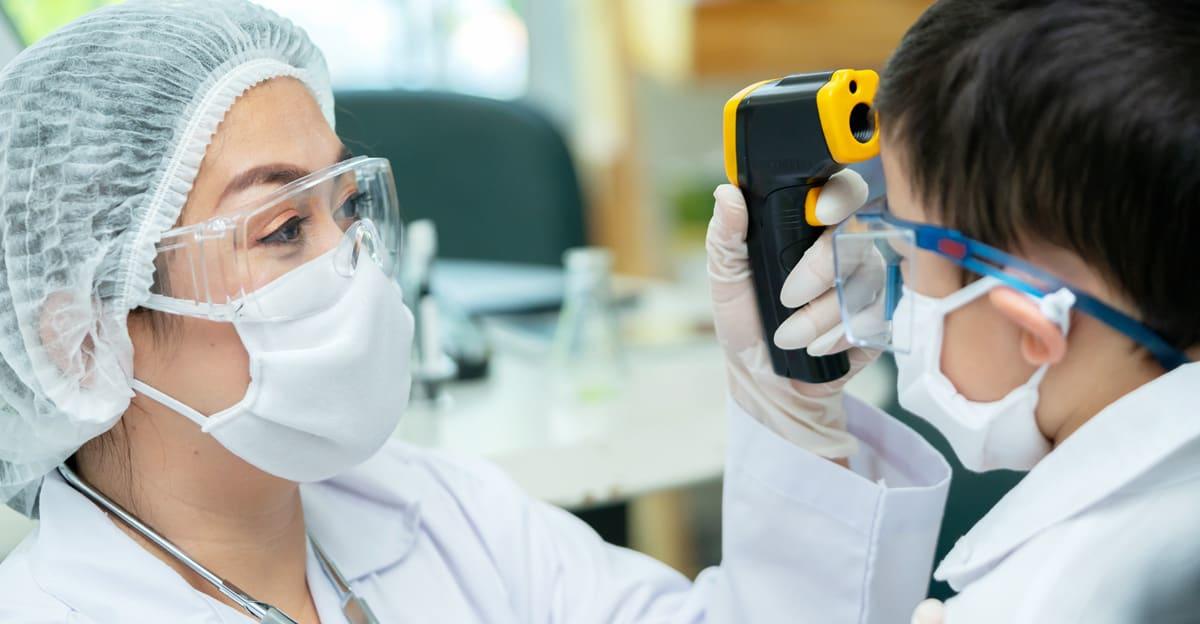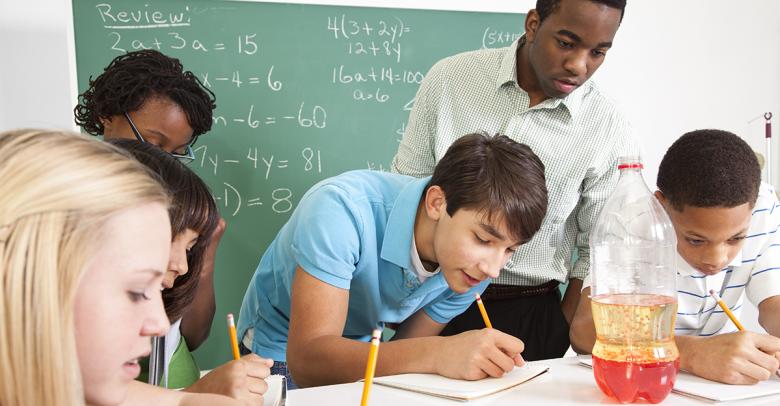School nurses bring a broad set of skills and experience in the monitoring of student and staff wellness, and they’re a critical resource as K-12 leaders plan to reopen schools amid a global pandemic. They are charged with maintaining the health of the entire school community, and they’re experienced in planning and providing care for students with special healthcare needs.
The National Association of School Nurses (NASN) has released interim guidance on the role that nurses should play in back-to-school planning. Based on this guidance, here are five key ways that K-12 leaders can leverage the experience of school nurses to help keep everyone safe when schools reopen.
Informing leaders on health considerations for reopening
One of the roles that school nurses should play in the reopening of schools is to work closely with K-12 leaders so they understand all of the health-related issues to consider before students and staff can safely return to school. These issues include making sure that…
- Facilities are well stocked with exam gloves, masks, face shields, aprons or disposable lab coats, and other personal protective equipment for nurses and nurses’ aides, as well as touch-free thermometers (pending CDC recommendations) and other medical supplies for screening students and staff for COVID-19 symptoms and administering on-site care.
- School buildings have an isolation room or area where students and staff who exhibit COVID-19 symptoms can be kept apart from others. Ideally, this area should be adjacent to the nurse’s office and should have its own outside door. If possible, an isolation room or area should have its own sink as well; portable sinks can help fill this need. Privacy screens might come in handy for keeping people separated within the nurse’s office until a full assessment has been made.
- Schools have clear policies and procedures for sending students and staff home if they exhibit COVID-19 symptoms and for making sure it’s safe for them to return to school once they’re symptom-free. Nurses and other K-12 leaders should follow CDC guidelines and/or state and local guidelines when jointly crafting return-to-school policies for individuals.
Helping to establish safe and healthy school environments
School nurses can also play an important role in collaborating with K-12 leaders to draft policies and procedures that support proper distancing, reduce the sharing of materials, establish healthy habits, and otherwise maintain safe and healthy school environments. For instance, nurses can help to…
- Draft and implement hand washing and sanitizing protocols, such as having students and staff wash their hands upon entering the building, before meals, after using the bathroom, and at regular intervals throughout the day. Again, portable sinks can make it easier for students and staff to wash their hands. Portable UV sterilizers and sanitizer cabinets can help keep surfaces and equipment germ-free as well.
- Develop COVID-19 screening protocols for staff, students, and visitors entering the building, if recommended by CDC and/or state or local guidance.
- Establish policies for safely isolating, caring for, and dismissing students and staff who exhibit possible coronavirus symptoms, so that others aren’t unnecessarily exposed to the virus. Nurses can refer to NASN’s guidance in helping to draft these policies.
Coordinating public and community health initiatives
School nurses also serve as a vital link between the education and public health sectors. They provide timely and accurate information to families and community members about public health developments, and they work with the entire school community to make sure health protocols are understood and followed. These activities might include…
- Working with K-12 leaders to develop public information campaigns to get the word out to all school stakeholders about safe and healthy practices for preventing the spread of the virus, such as hand washing, social distancing, and other recommended practices.
- Coordinating with K-12 leaders to develop information campaigns to reduce stigma and counter bias or bullying of certain community members as a result of fear or ignorance associated with COVID-19, such as the stigmatizing of those who have moved from an area with a high number of cases. For help with this issue, see the federal government’s “Reduce Stigma Related to Coronavirus Disease 2019” resource.
- Collaborating with public health officials and local community organizations to make sure families who have lost jobs (and possibly their access to health insurance) know where they can turn for assistance with health care, food/nutrition, and other basic needs.
Managing on-site student and staff care
School nurses obviously will play a critical role in establishing protocols for the assessment and treatment of staff and students who exhibit common COVID-19 symptoms at school, including fever, cough, and shortness of breath. (Recent news reports have indicated that children might exhibit additional symptoms not appearing in adults; for the latest information, see the CDC’s “Information for Pediatric Healthcare Providers” page.)
But according to NASN, here are three other important roles that nurses will need to fill as well:
- Planning for and administering acute respiratory treatment using up-to-date standards of care. For instance, nebulizer treatments and suctioning are identified by the CDC as aerosol-generating procedures requiring a N95 mask fitted to the healthcare worker.
- Addressing students’ emotional needs. Students may naturally be anxious about the virus itself, or their family’s economic situation as a result of the virus. Nurses should coordinate with school counselors, psychologists, and social workers to ensure that students’ emotional health needs are being met. NASN’s K-6 Emotional Management program is a resource that can help.
- Identifying unmet healthcare needs. When students finally return to school after a lengthy absence, one of the jobs of school nurses will be to assess their current state of health and determine whether those who had pre-existing medical conditions might have stopped receiving treatment, run out of medication or supplies, or missed important appointments or procedures while schools were closed. Nurses will need to coordinate with parents, healthcare providers, and interdisciplinary teams to identify and fill any unmet needs and revise IHPs to address current considerations if necessary.
Collecting and sharing appropriate health data
Finally, school nurses should coordinate with local, regional, and state health departments to collect and report on accurate information regarding attendance, the number of staff and students exhibiting COVID-19 symptoms or referred to local healthcare providers, and other data that could be important in understanding key trends in how the virus might be spreading.
School nurses as Chief Wellness Advocates
Reopening schools safely will require a number of processes and systems to be put into place before students, staff, and visitors return to the facility — and school nurses are essential to establishing, maintaining, and overseeing these protocols.
In effect, nurses must function as the Chief Health and Wellness Advocates for their schools, and their roles have never been more important than now, with school communities wrestling with how to prevent the spread of the novel coronavirus.
Stacey Rubin
Stacey Rubin joined School Specialty in September 2018, bringing over 30 years of diverse B2B and B2C blue-chip brand experience and success as both a marketing department head and advertising agency account, strategy and new business leader. An award-winning integrated marketing pro, kid marketing expert and omni-channel retail guru with an exceptional strategic foundation and flair for identifying innovative ideas.







Leave a Reply